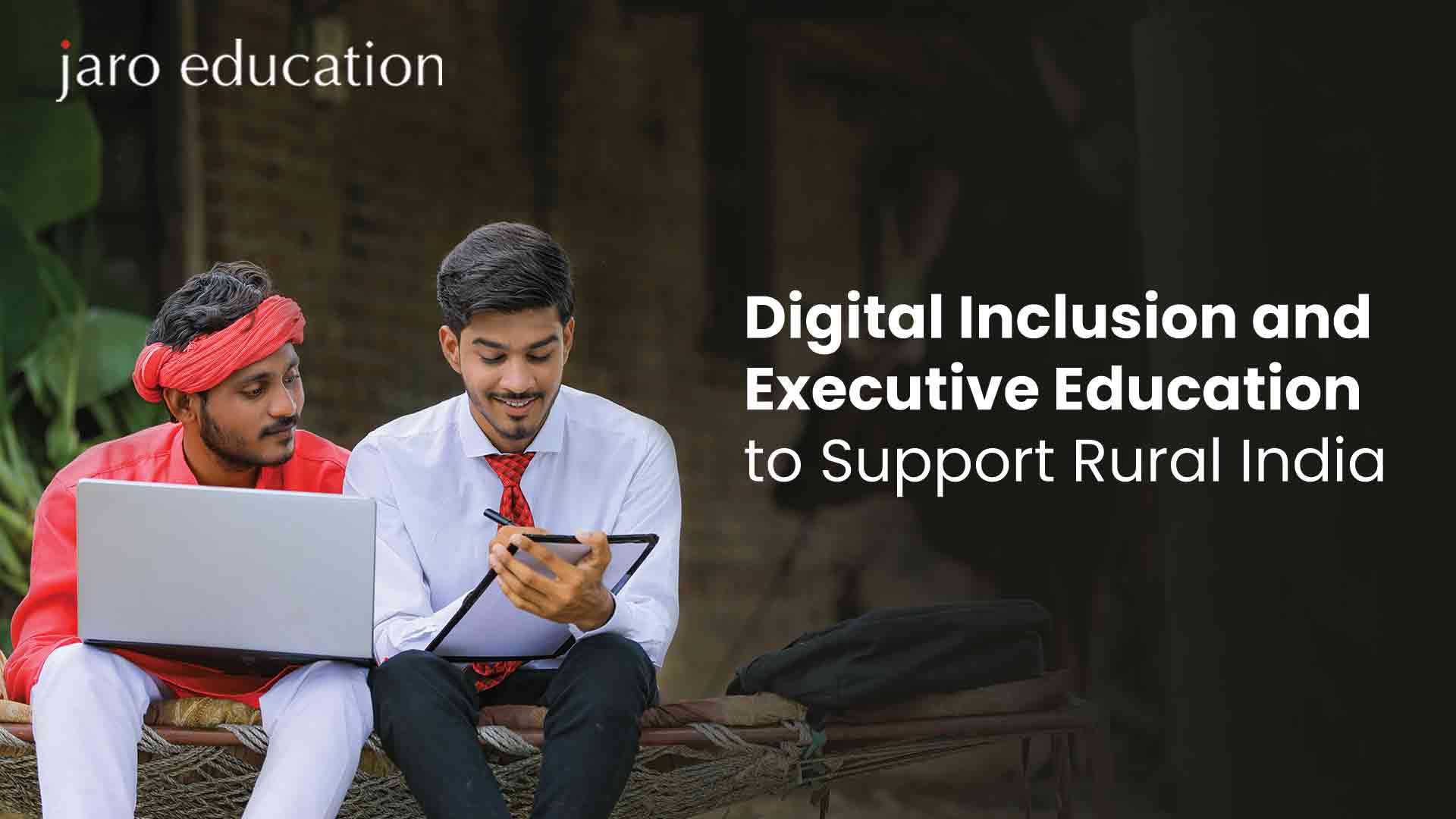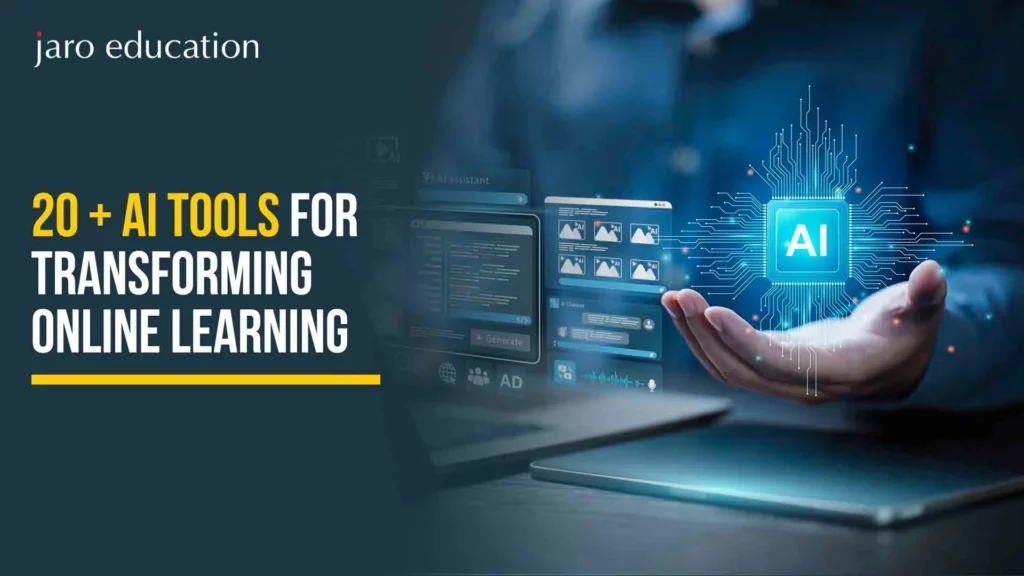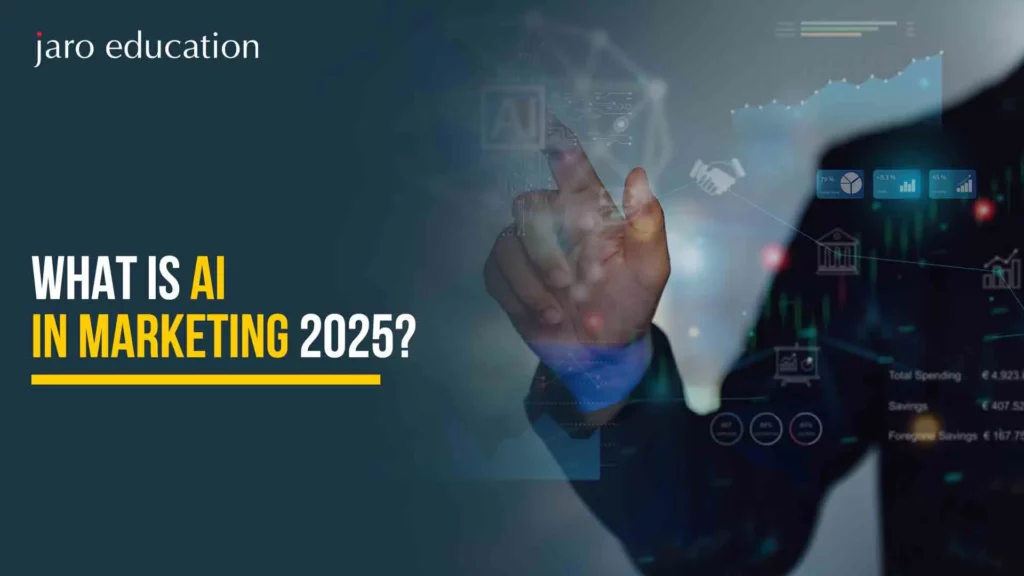Education Schemes in India: Digital Inclusion and Executive Education to Support Rural Youth
Table of Contents

- jaro education
- 27, June 2024
- 2:00 pm
The digital landscape of India is evolving rapidly, yet beneath the surface lies a stark reality: the digital divide. This chasm, as delineated by the Organisation for Economic Co-operation and Development (OECD), accentuates the gaping disparity in access to information and communication technologies (ICTs) across socio-economic strata. As we navigate through the corridors of this digital divide, it’s imperative to shed light on its ramifications, particularly on the future torchbearers of our nation – the youth.
The Impact of the Digital Divide on Youth
At the heart of this discourse lies the profound impact of the digital divide on India’s burgeoning youth. For these individuals, digital exclusion translates into a myriad of missed opportunities, from restricted educational avenues to curtailed career prospects. In an era where digital literacy is tantamount to traditional literacy, the inability to access digital resources erects insurmountable barriers, thwarting the aspirations of millions.
Education schemes in India have been pivotal in addressing this issue. However, the disparity in access to digital tools remains a significant hurdle. Government schemes for education are designed to bridge these gaps, yet implementation challenges persist. Ensuring that rural youth can benefit from these education schemes in India is crucial for their overall development.
The Role of Education Schemes in India
In this landscape of digital asymmetry, education emerges as a formidable tool for empowerment. The imperative to infuse digital literacy into the fabric of our educational institutions has never been more pressing. Platforms such as DIKSHA, championed by the National Council for Educational Research and Training (NCERT), epitomize this vision, paving the way for an inclusive educational ecosystem.
Government schemes for education like DIKSHA are a step in the right direction. These initiatives aim to provide digital resources and training to students and teachers alike. However, the reach of these education schemes in India needs to be expanded to ensure no student is left behind.
From Policy to Practice: Government Schemes for Education and the Digital Divide

Shifting focus on a recent report, the Internet and Mobile Association of India (IAMAI) found that only 29% of rural India has access to the Internet, compared to 64% of urban India. This digital divide is not only a social issue but also an economic one.
A significant obstacle in rural India is the limited availability of financial services. The majority of rural areas still depend on cash transactions, posing inconvenience and increasing susceptibility to theft and fraud. Digital payments offer a promising solution to these challenges, as they can lower transaction costs, enhance financial inclusion, and stimulate entrepreneurship in rural economies. However, the lack of access to digital technologies threatens to perpetuate the digital divide and hinder the progress of rural India.
Education schemes in India must address these broader socio-economic issues. Government schemes for education should not only focus on digital literacy but also on integrating digital financial literacy into the curriculum. This will ensure that rural youth are equipped to participate fully in the digital economy.
Government Schemes for Education: Initiatives and Policies
The Digital India Mission, a beacon of India’s digital aspirations, underscores the government’s unwavering commitment to bridging the digital chasm. Initiatives like the BharatNet project and PMGDISHA epitomize this resolve, extending the digital frontier to the farthest corners of rural India.
Education schemes in India, such as BharatNet and PMGDISHA, are integral to this mission. These government schemes for education aim to provide the necessary infrastructure and training to ensure digital literacy and inclusivity. The BharatNet project, for example, aims to connect over 250,000-gram panchayats (village councils) with high-speed internet, thereby bringing the digital revolution to rural doorsteps.
Moreover, landmark judicial pronouncements, such as the Kerala High Court’s recognition of internet access as a fundamental right, herald a paradigm shift in our conception of digital inclusivity. This recognition emphasizes the importance of ensuring that education schemes in India align with the broader goal of universal digital acces
Future Opportunities in Digital Inclusion and Executive Education
As we chart our course toward a digitally inclusive future, the horizon brims with promise. Platforms like the G20 summit offer a global stage to champion the cause of inclusive education and skill development, resonating with India’s vision for a digitally empowered society.
Executive education programs also play a crucial role in this context. By training rural youth and local leaders in advanced digital skills and leadership, these programs can create a ripple effect of digital literacy and entrepreneurial spirit. Integrating executive education into government schemes for education can provide rural youth with the skills needed to navigate and thrive in a digital world.
The Synergy Between Digital Inclusion and Executive Education in Government Schemes for Education
There is a synergistic relationship between digital inclusion and executive education. Education schemes in India must evolve to incorporate advanced training programs that prepare students not just for digital literacy but for digital leadership. Government schemes for education should, therefore, include modules on executive education to develop future-ready leaders who can drive rural development and digital transformation.
The involvement of educational institutions and private enterprises can further enhance these efforts. Collaborative initiatives between the government, educational bodies, and the private sector can ensure that education schemes in India are comprehensive and inclusive. These partnerships can also help in resource mobilization, ensuring that government schemes for education have the necessary funding and support.
Wrapping Up
The journey to bridge the digital divide is fraught with challenges, yet it is also imbued with boundless opportunities. Through concerted efforts, underpinned by visionary policies and transformative initiatives, India stands poised to unleash the full potential of its youth, ushering in an era of digital empowerment and inclusive growth.
Education schemes in India, supported by robust government schemes for education, are pivotal in this transformative journey. By focusing on digital inclusion and executive education, we can empower rural youth to seize the promise of the digital age. By continuously refining and expanding education schemes in India, we can ensure that government schemes for education are more effective in bridging the digital divide and empowering rural youth. Together, let us embark on this transformative odyssey, forging a future where digital divides are but a relic of the past, and every young Indian is empowered to thrive in a digitally inclusive world.









